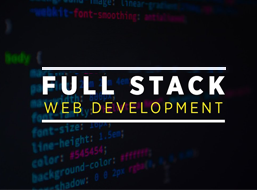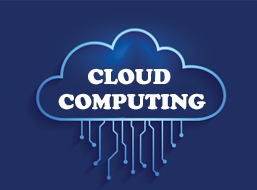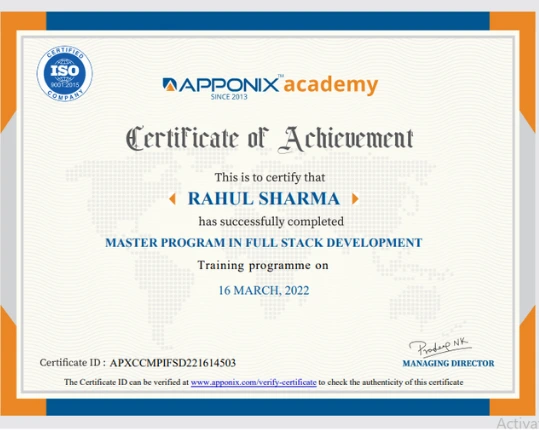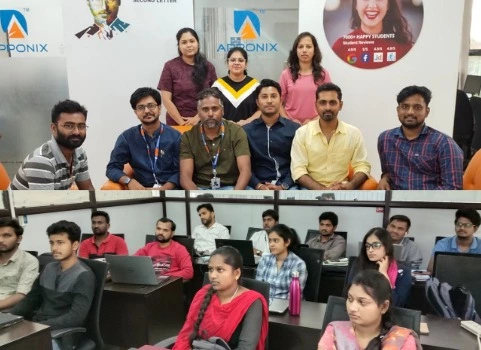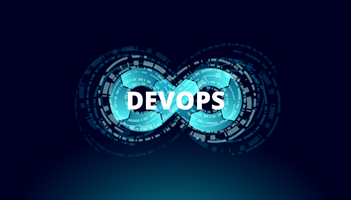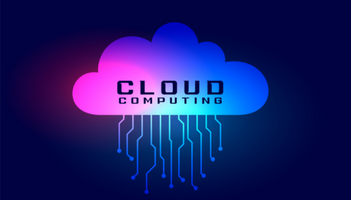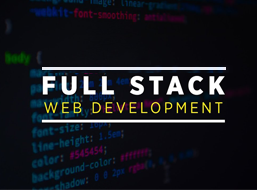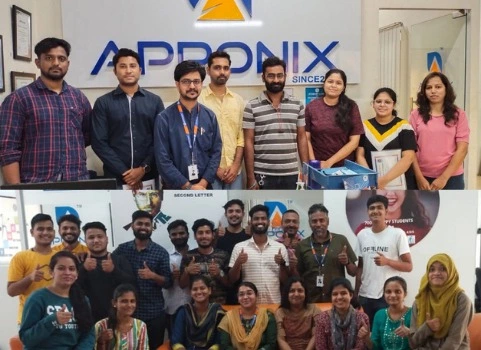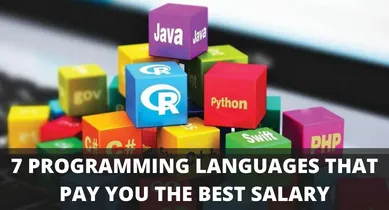Master Program in Python Full Stack Development
Guaranteed 20 Interview Arrangements | Be eligible for 90% of the jobs in Python Full Stack Development
2000+ Ratings
3000+ Happy Learners
Master Program in Python Full Stack Development Videos
Skills Covered in Python Full Stack Development Course
Key Features
Our Alumni Working in

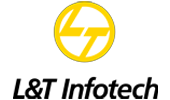












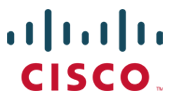


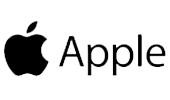


Course Reviews
I came to know about Apponix through Google. I am about to complete the course on Full-stack web development. The trainer and others associated with the course are very good and the teaching is top-notch.
I have taken the Full stack development course of Apponix Technologies. Trainers are good and very helpful for understanding the concepts. Thank you for helping us. ll trainers are very good, experienced with detailed Knowledge about the subject.
Apponix technology is a well-maintained sector where you can do your internship. Advanced staff, teaching style is very good. Not only knowledge gain but you will also get best experience. ll trainers are very good, experienced with detailed Knowledge about the subject.
I joined Apponix for python classes. All trainers are very good, experienced with detailed Knowledge about the subject. I learned about the automation skills and all the concepts of Java here. The best part is that they provide each topics video after the class and clear all doubts if we have any.
The Trainer who teaches Python has immense knowledge about the subject and the training is friendly you can clarify your doubts in the class room itself, it's a complete hands on training given by the trainer which helped me to learn the course more effectively as well as easily. Python Course at VSS innovative technologies is highly recommended.
Our Recent Placements
Classroom Training
Classroom Training
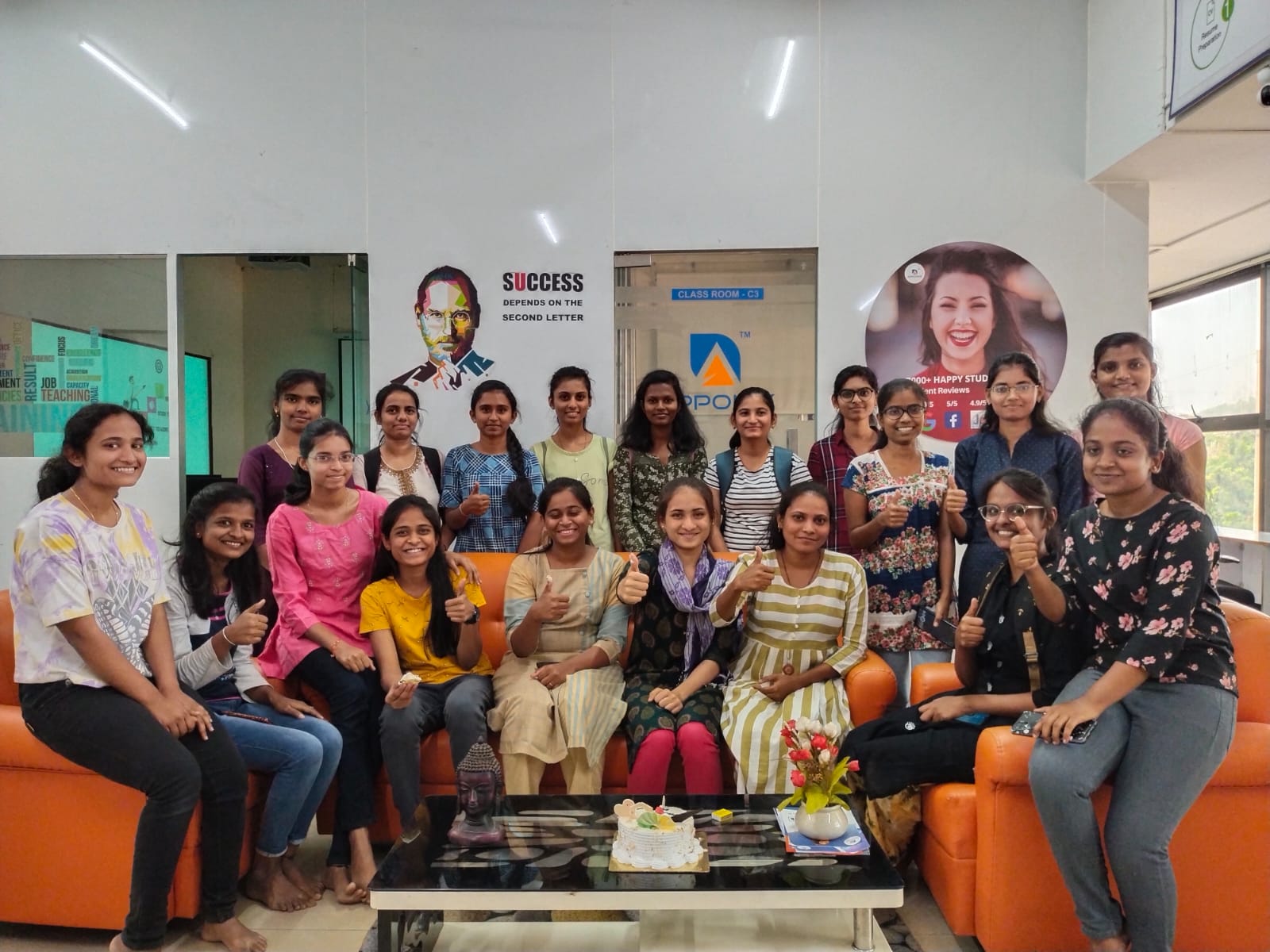
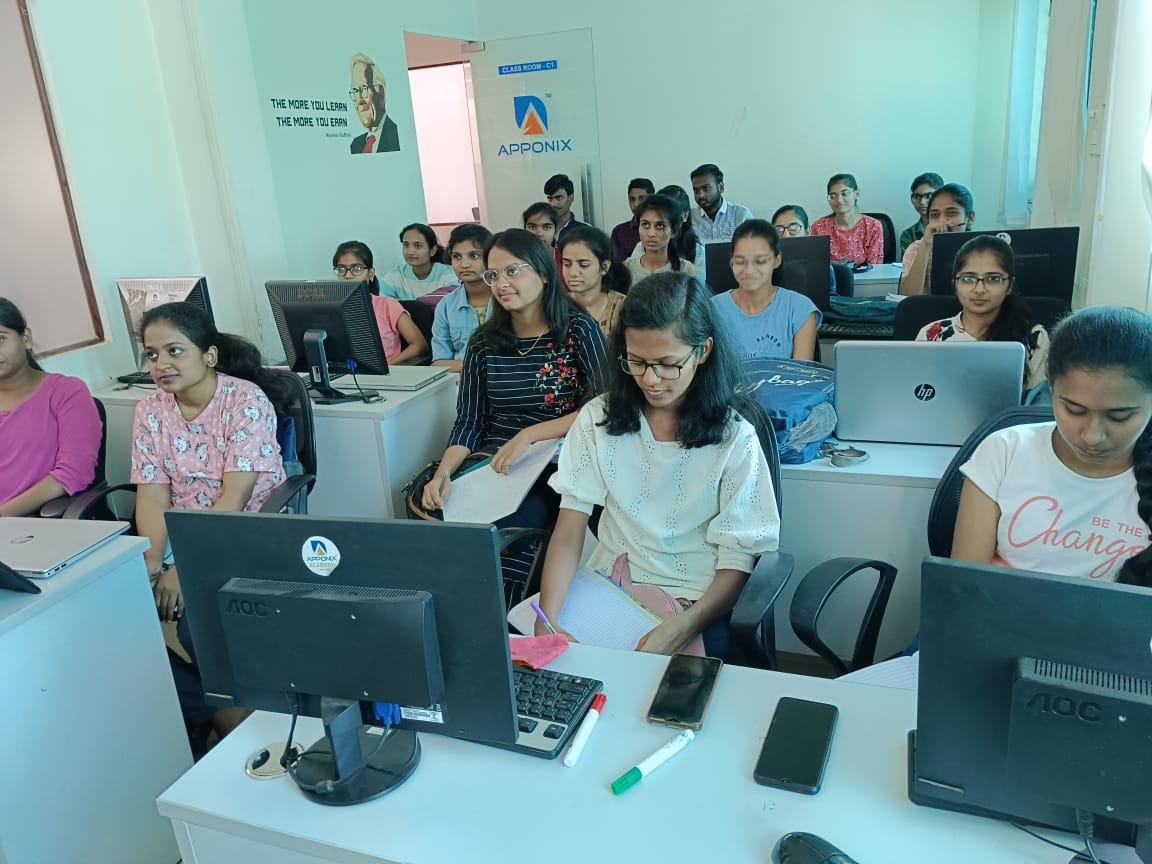
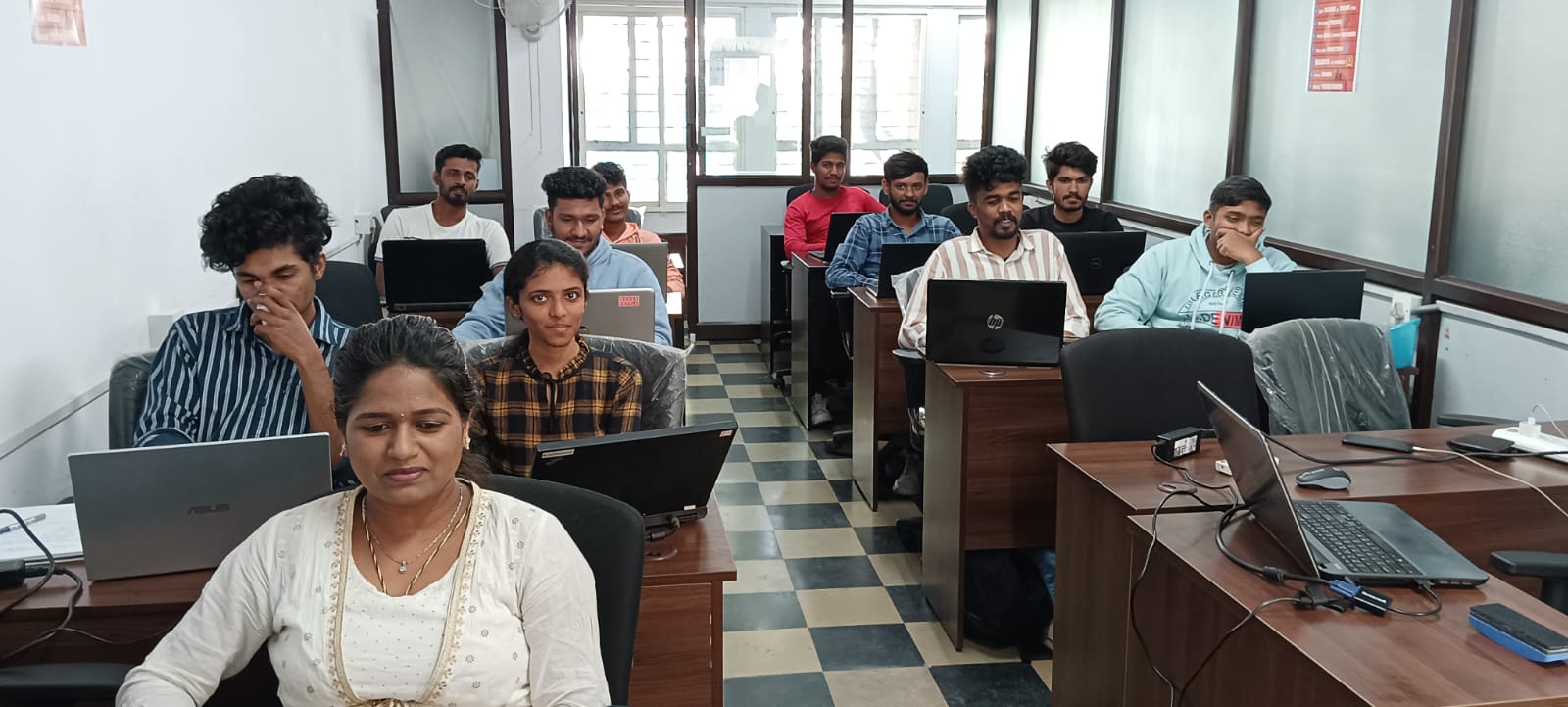
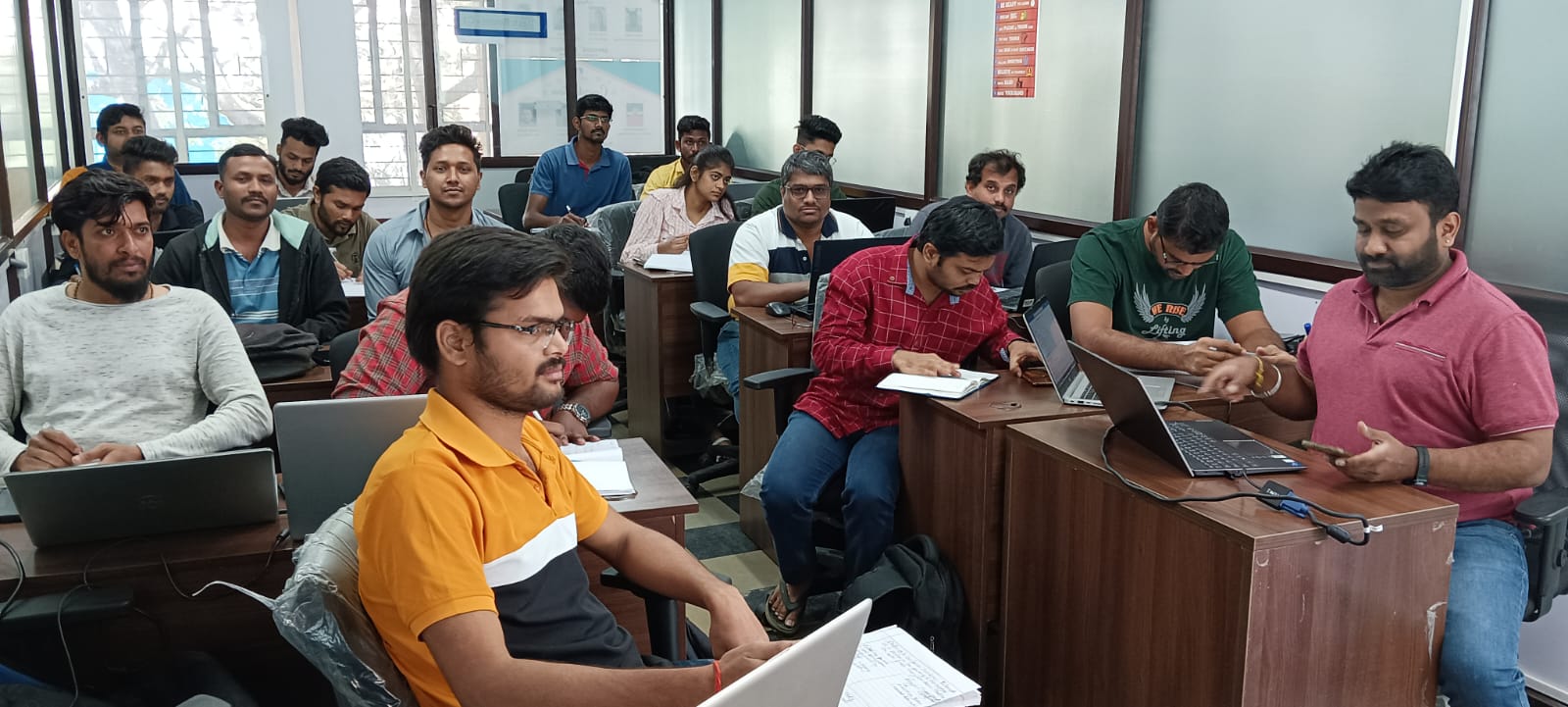
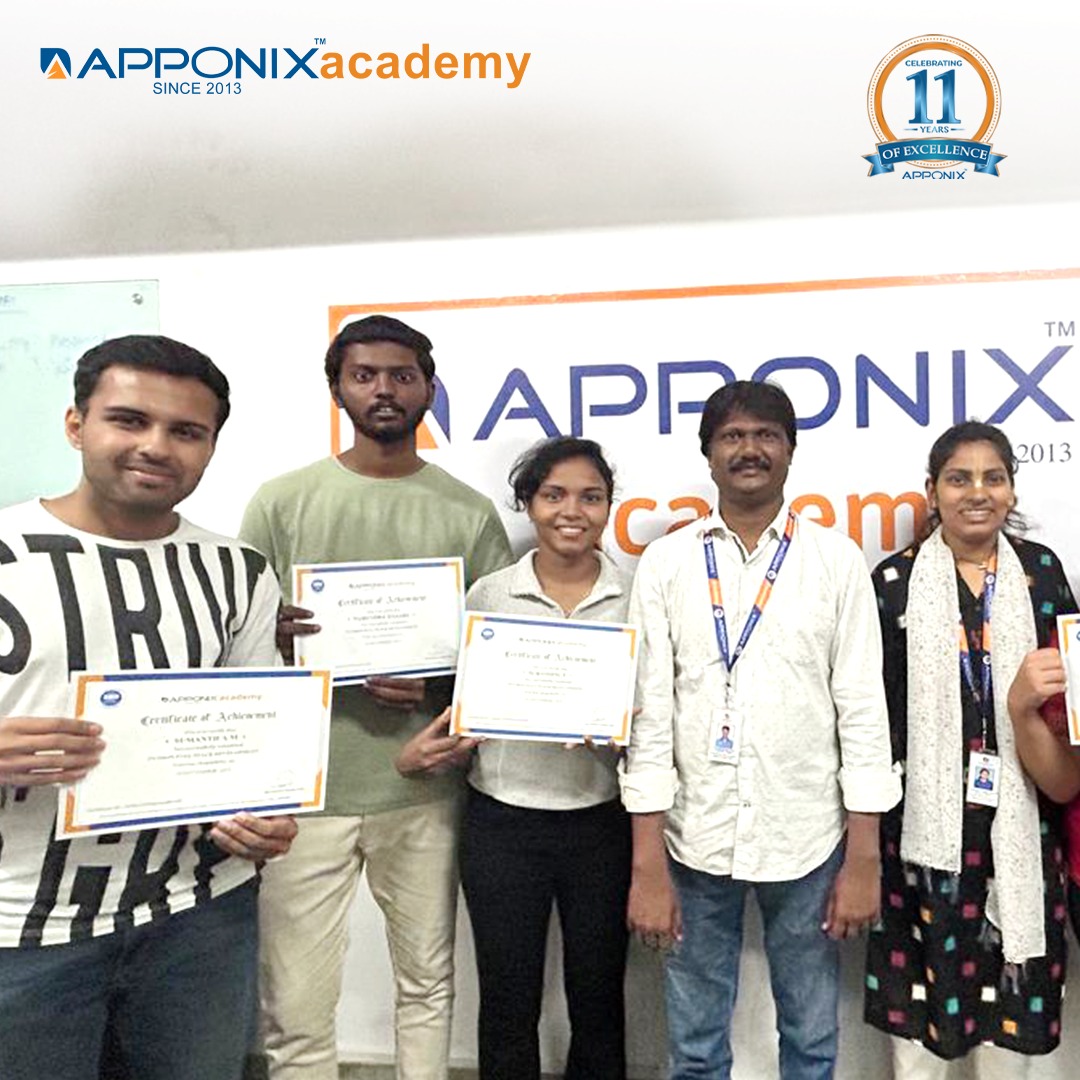
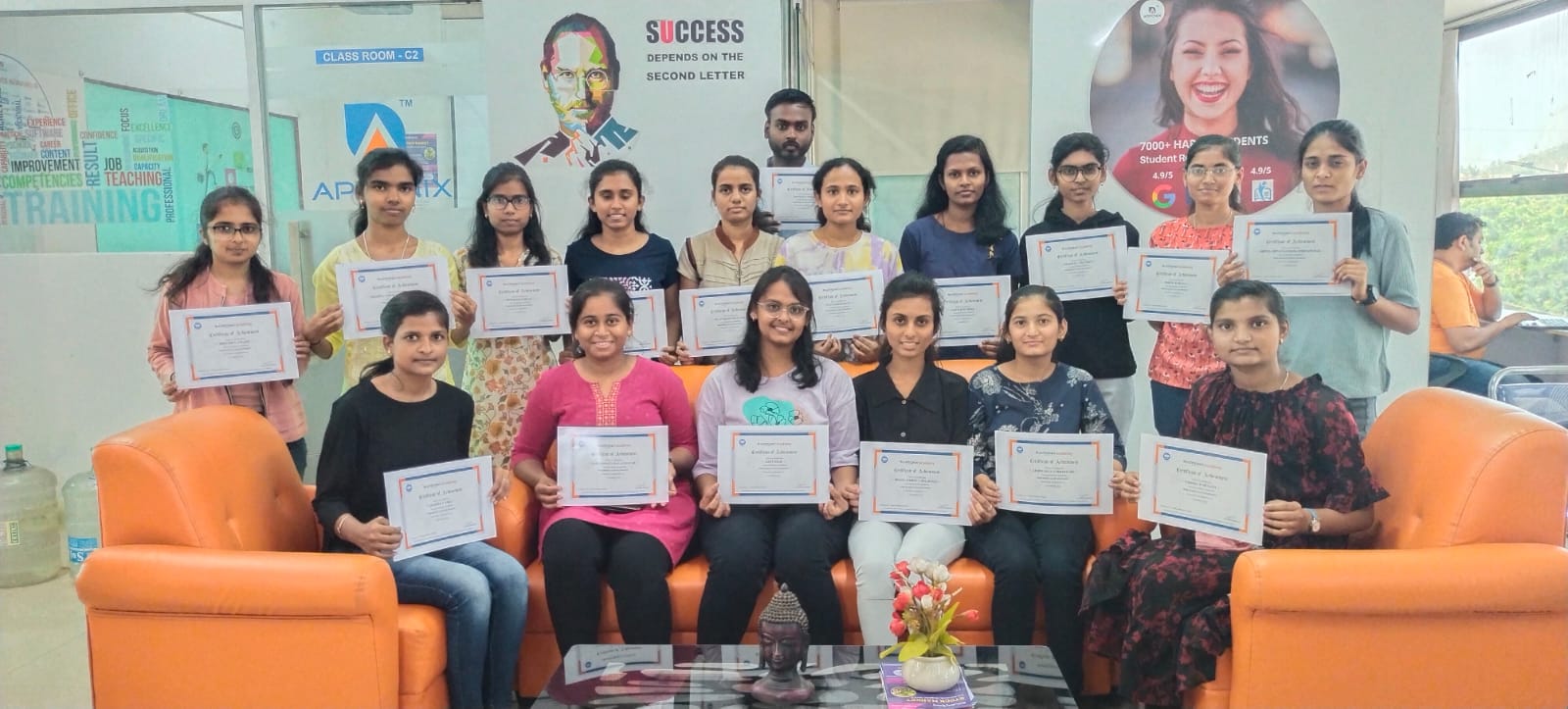
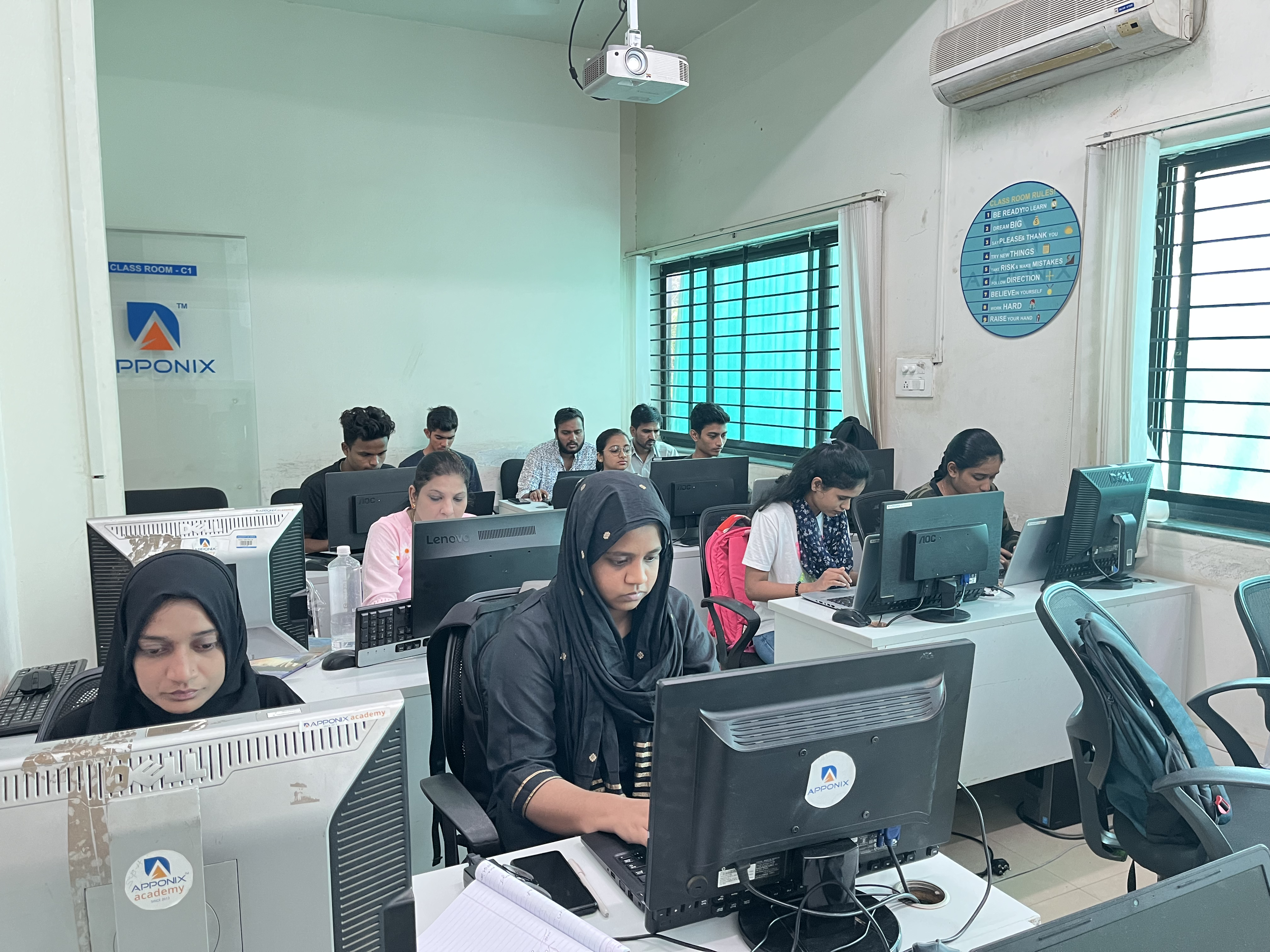
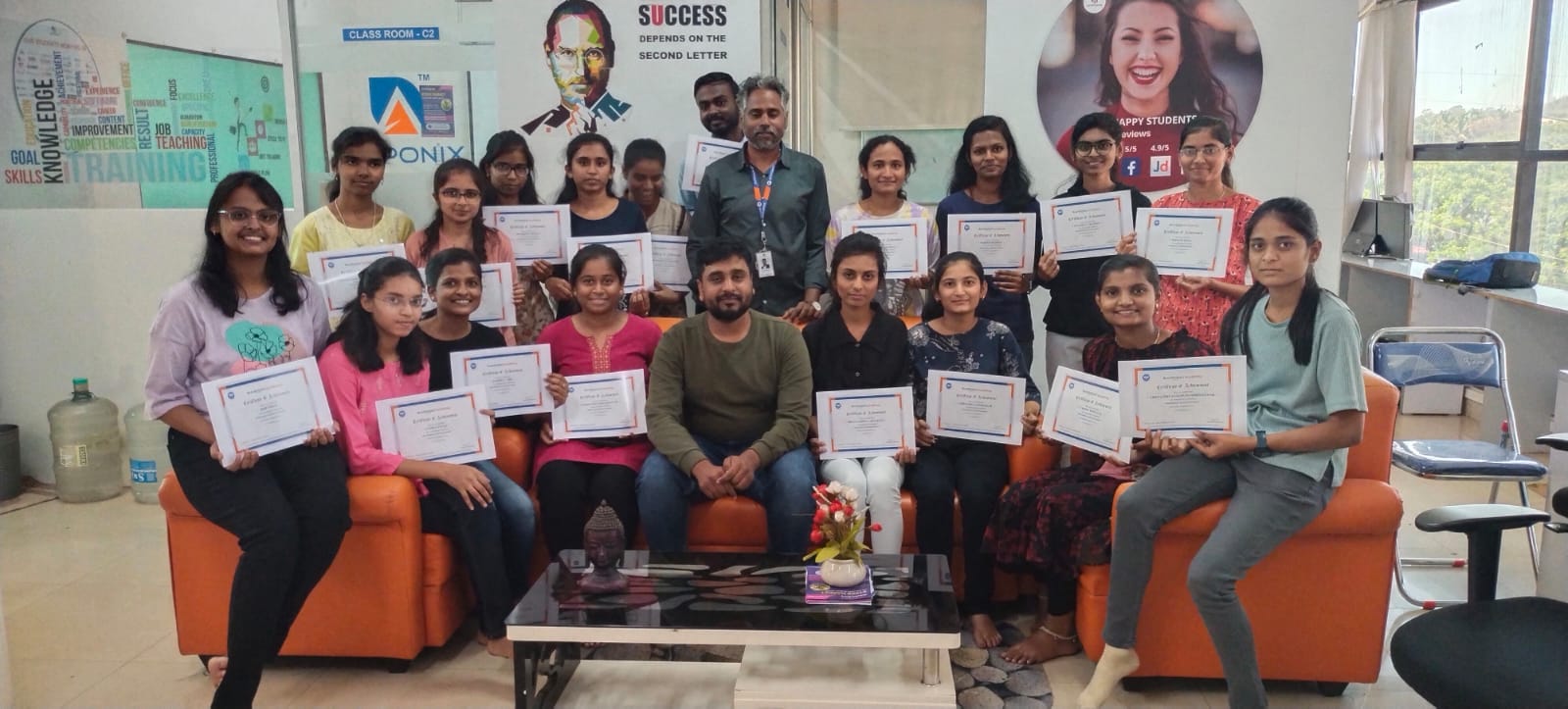
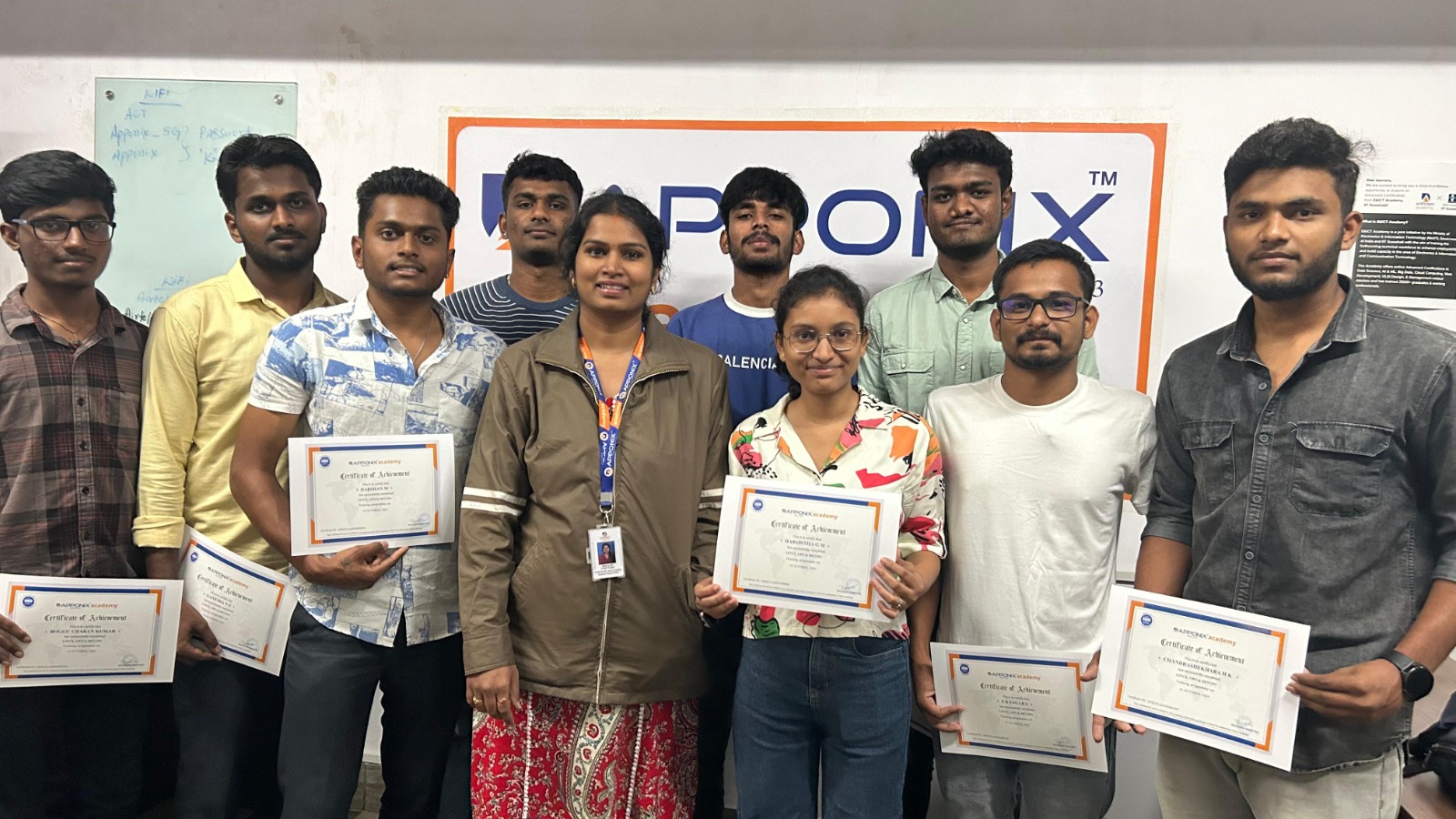
Available Training Options
Online Training
₹
- Interactive Live Training Sessions
- 140+ Hrs of instructor-led online Sessions
- Delivered by Working Professionals
- 1 Year Access to Recorded Sessions
- Placement Assurance
- Guaranteed 20 Interview Arrangements
- Advanced Certificate from Jain University
Curriculum
Pre-requisites
Candidates should have basic programming language knowledge. This course is ideal for fresher and IT professionals.
Course Syllabus
- WhatisMarkupLanguage
- Basic Structure of HTML
- Meta Tags
- External Link Tags
- HTML Structure Tags
- Difference between HTML & XHTML
- Introduction to HTML5
- What is new in HTML5
- HTML5 Semantic Tag
- HTML5 Multimedia
- CreateTable, Div, and FrameTag
- Content and HeaderTags
- Paragraph, Span, PreTags
- Anchor Links and Named Anchors
- I frame an fIm aging Implementing Framein Real-time
- Working with Forms
- Form Tagand Attributes
- POST and GET Method
- TextInput,TextArea,Checkbox and Radio
- Password Field
- Select Option, Option Group
- File Field and Hidden Fields
- Submit, Reset, Image Buttons
- HTML5 Forms
- Canvas & SVG
- Converting svgs into font-icons
- HTML5 Apis
- Introduction to CSS2 & CSS3
- Types of Style Sheets
- MediaType
- Default CSS Properties
- CSS Selectors
- Basic CSS Selectors
- Advanced CSS Selectors
- CSS properties
- Background Properties
- Block Properties
- Box Model Properties
- List Properties
- Border Properties
- Positioning Properties
- Flex
- Adding our own fonts to websites
- CSS Optimization and CompressionTips
- New CSS3 Properties
- CSS Rounded Corners
- Border Image
- Box and Text Shadow
- Multiple Backgrounds
- Background Origin
- Background Resize
- CSS Clip, Gradients,Opacity
- Transitions & Transform
- Introduction to Client-side scripting
- Introduction to Java Script
- Javascript Types
- Variables in JS
- Operators in JS
- Conditions Statements
- Java Script Loops
- JS Popup Boxes
- JS Events
- JS Arrays
- JS Objects
- JS Functions
- Using Java Script in Realtime
- Validation of Forms
- Related Examples
- Introduction to jQuery
- jQuery Features
- Installing jQuery
- j Query Syntax
- jquery ready function
- jQuery Selectors
- j Query Actions
- jQuery Custom Functionality
- jquery libraries
- jquery validation
- jquery slideshow
- jquery dropdown
- JS Functions
- jQuery UI
- jQuery Accordions
- jquery tabs
- jQuery Tooltips
- jquery autocomplete
- Understanding Basic SQL Syntax
- Querying Data with the SELECT Statement
- Filtering Results with the Where Clause
- Shaping Results with ORDER BY and GROUP BY
- Matching Different Data Tables with JOINS
- React JS Basics
- React JS Features
- React JS Setup and Hello World Application
- ReactJS JSX
- React JS Component
- ReactJS State
- React JS Props
- React JS Constructor
- React JS Life cycle
- ReactJS Events
- React JS Router
- React JS Forms
- React JS Tables
- React JS Portals
- React JS ES6
- React JS CSS
- React JS Hook
- React JS and Back End Integration
- React JS Using Back End CRUD Application
- React JS,JDK1.8, SpringBoot,Hibernate, Maven, MySQL,Microservices,
- Rest Api
- Authentication and Authorization
- Mini project-QuizApp
- Mongo DB
- Introduction & Overview of MongoDB
- MongoDB installation
- CRUD Operations MongoDB
- Data Modeling
- StorageClasses
- Indexing and Performance Considerations
- Aggregation
- MongoDB replication
- Brief History of Angular Prerequisite for Angular Basic Understanding of CSS
- Basic Understanding on Javascript
- Introduction: Typescript
- Building Blocks of Angular
- Whatis Linting? Why does it matter to us?
- More on TS Lint
- ExploringTS Lint
- Playing With TS Lint
- Modules: What makes it cool?
- Modules: What does a Module look like?
- Modules: What does import do?
- Modules: Why Declarations & imports?
- Modules: Why Providers & Bootstrap?
- Modules: What is Root Module?
- Creating new module in Angular Application.
- Creating new Component in new module..
- Directives: What makes the ms awesome?
- Directives: What really is a Directive?
- Directives: Types of Directives
- Directives: Flavours of Directives
- Directives How to create Directives
- Directives: How does Directive look like?
- What makes the Component so cool?
- Component Life cycle
- Components: Components in Components
- Components: Component Interaction
- Components: More on Components
- Pipes: What makes the ms awesome?
- Pipes: What really is pipes?
- Pipes: Journey from filters to Pipes Syntax of Pipes and the Connection with Pipes
- Types of Pipes
- Diving in to Built-in Pipes
- Pipes:How to create Pipes
- Pipes: How does pipes look like? Using Multiple Pipes...
- Services What makes the ms awesome?
- Services: What really is a Service?
- Services: Types of Services
- Services: How to create Services
- Services: How does services look?
- Routing: What does it take to do Routing?
- Routing What really is a Routing?
- Routing: Who does the real Routing?
- Angular Router: Whatis it?
- Routing: How to Create Routing
- Routing: How does Router look
- What isTest Driven Development (TDD) And Behavioral Driven Dev development (BDD)?
- Testing Frameworks in JS
- Why to test angular code?
- Types of Testing
- How to runtest?
- Testing : Fundamental Concepts Dependency Injection(DI)
- Testing: Karma
- Testing: Test Entry File
- ServiceTesting
- DirectiveTesting
- Pipe Testing
- Test debugging
- Component Testing
- Mini Project:User Dashboard
- Using Bootstrap 4 in Angular Project
- Why do we need Python?
- Program structure
- Execution Types
- What is an interpreter?
- Interpreters vs Compilers
- Using the Python Interpreter
- Interactive Mode
- Running python files
- Working with Python shell
- Integrated Development Environments (IDES)
- Interactive Mode Programming
- Script Mode Programming
- Python Arithmetic Operators
- Python Comparison Operators
- Python Assignment Operators
- Python Bitwise Operators
- Python Logical Operators
- Python Membership Operators (in, not in)
- Python Identity Operators (is, is not)
- Python Operators Precedence
- Data Types
- Variables
- Assigning Values to Variables
- Multiple Assignment
- Python Numbers
- Python Strings
- Accessing Values in Strings
- String Special Operators
- Triple Quotes
- Built-in String Operations
- Accessing Values in Lists
- Updating Lists
- Delete List Elements
- Basic List Operations
- Indexing, Slicing, and Matrixes
- Built-in List Functions & Methods
- Accessing Values in Tuples
- Updating Tuples
- Delete Tuple Elements
- Basic Tuples Operations
- Indexing, Slicing, and Matrixes
- No Enclosing Delimiters
- Built-in Tuple Functions
- Accessing Values in Dictionary
- Updating Dictionary
- Delete Dictionary Elements
- Properties of Dictionary Keys
- Built-in Dictionary Functions & Methods
- if statements
- else statements
- nested if statements
- while loop
- for loop
- nested loops
- Loop Control Statements
- 1 break statement
- 2 continue statement
- 3 pass statemen
- Defining a Function
- Syntax
- Calling a Function
- Pass by reference vs value
- Function Arguments
- Required arguments
- Keyword arguments
- Default arguments
- Variable-length arguments
- The return Statement
- Scope of Variables
- Built-in module and functions Os module
- mkdir()
- chdir()
- getcwd()
- rmdir()
- listdir()
- Constants
- Trigonometry
- Logarithmic
- Representation
- random()
- randint()
- randrange()
- choice ()
- shuffle ()
- Framework vs Packages
- Folium Introduction
- Why are modules used?
- Creating modules
- The import Statement
- The from...import Statement
- The from...import * Statemen
- Locating Modules
- The PYTHONPATH Variable
- Namespaces and Scoping
- The dir( ) Function
- The globals() and locals() Functions
- The reload() Function
- Packages in Python
- Constructing user defined packages
- Importing user defined packages
- Creating class in Python Private Identifier
- Constructor
- Inheritance • Polymorphism
• Lambda
• Map
• Filter
• Reduce
- Opening Text File
- Working with a File on Python
- The open function
- File modes
- The file object attributes
- close() method
- write() method
- read() method
- Files: Input
- Files: Output
- Reading files
- Renaming & deleting files
- Writing into a file
- remove() method
- Basic Operations using Tkinter
- Buttons and Textbox
- Menu Bar
- Message Box and Radio Button
- Checkbox and Event Creating
- Creating Application in GUI
- Overview of SQLite
- Integrating Python with SQLite
• Project Demonstration Tkinter
- Basics of Pandas and Numpy
- How to use Anaconda
- How to create a dashboard
- Overview of Django
- Introduction to Django
- What Is a Web Framework?
- The MVC Design Pattern
- Django’s History
- Installing Python
- Installing Django
- Setting Up a Database
- Starting a Project.
- The Development Server
- Django Commands Overview
- Your First View: Dynamic Content
- Mapping URLs to Views
- How Django Processes a Request
- URL configurations and Loose Coupling
- 404 Errors
- Your Second View: Dynamic URLs
- A Word About Pretty URLs
- Wildcard URL patterns
- Django’s Pretty Error Pages
- Template System Basics
- Using the Template System
- Creating Template Objects
- Rendering a Template
- Multiple Contexts, Same Template
- Context Variable Lookup
- Playing with Context Objects
- Basic Template Tags and Filters Tags
- Philosophies and Limitations
- Using Templates in Views
- Template Loading
- render_to_response()
- The locals() Trick
- Subdirectories in get_template()
- The include Template Tag
- Template Inheritance
- The “Dumb” Way to Do Database Queries in Views #
- The MTV Development Pattern
- Configuring the Database
- Your First App
- Defining Models in Python
- In Your First Model
- Installing the Model
- Basic Data Access
- Adding Model String Representations
- Inserting and Updating Data
- Selecting Objects
- The “Dumb” Way to Do Database Queries in Views
- The MTV Development Pattern
- Configuring the Database
- Your First App
- Defining Models in Python
- In Your First Model
- Installing the Model
- Basic Data Access
- Adding Model String Representations
- Inserting and Updating Data
- Selecting Objects
- Activating the Admin Interface
- Using the Admin Interface
- Users, Groups and Permissions
- Customizing the Admin Interface
- Customizing the Admin Interface’s Look and Feel
- Customizing the Admin Index Page
- When and Why to Use the Admin Interface
- Search
- The “Perfect Form”
- Creating a Feedback Form
- Processing the Submission
- Custom Validation Rules
- A Custom Look and Feel
- Creating Forms from Models
- URL configuration Tricks.
- Streamlining Function Imports
- Using Multiple View Prefixes
- Special-Casing URLs in Debug Mode
- Using Named Groups
- Understanding the Matching/Grouping Algorithm
- Passing Extra Options to View Functions
- Using Default View Arguments
- Special-Casing Views
- Capturing Text in URLs
- Determining What the URL configuration Searches Against
- Including Other URL configurations
- How Captured Parameters Work with include()
- How Extra URL configurations Options Work with include()
- Section II : Django Sub Framework
- Using Generic Views
- Generic Views of Objects
- Extending Generic Views
- Making “Friendly” Template Contexts
- Adding Extra Context
- Viewing Subsets of Objects
- Complex Filtering with Wrapper Functions
- Performing Extra Work
- Template Language Review
- Request Context and Context Processors
- django.core.context_processors.auth
- django.core.context_processors.request
- Guidelines for Writing Your Own Context Processors
- Inside Template Loading
- Extending the Template System
- Creating a Template Library
- Writing Custom Template Filters
- Writing Custom Template Tags
- Cookies
- Getting and Setting Cookies
- The Mixed Blessing of Cookies
- Setting Test Cookies
- Users and Authentication
- Enabling Authentication Support
- Using Users
- Logging In and Out
- Limiting Access to Logged-in Users
- Managing Users, Permissions and Groups
- Using Authentication Data in Templates
- Permissions
- Groups
- Messages
- Profiles
- Navigate the AWS Management Console
- Recognise AWS Global Infrastructure
- Describe the security measures AWS provides
- Create an Amazon EC2 instance
- Remotely connecting to an EC2 instance
- Setting up Amazon Linux and Apache web server
- Browsing Amazon Machine Images (AMI)
- Specifying security groups and key pairs
- Creating new images off of running instances
- Identify key AWS storage options
- Describe Amazon EBS
- Use Amazon EBS with Amazon EC2
- Working with Volumes and snapshots
- Transmitting data in/out of the Amazon cloud
- Implementing a Web server in an Amazon Linux/Windows Instance
- Configure the firewall to access a Web server
- Security issues in Public Cloud
- Securing the Access : Creating a RSA Public/Private Key for VMs
- Creating a software firewall
- Configuring firewall rules
- Securing the access with an Elastic IPs
• Using EC2 Command Line APIs [from Windows/Linux machines]
- Creating Groups and Defining access policy
- Creating Users
- Login to AWS account using new users
- • Unix, Linux, Debian
- Virtualization, software, diff b/w reg and virt
- OS Architecture
- Windows VS Linux
- Gnome and shell
- Types of shell
- FS Hierarchy
- Access a shell prompt and issue commands with correct syntax Listing and navigating
- Log in and switch users in multiuser targets
- Archive, compress, unpack, and uncompress files using tar, star, gzip, and bzip2
- Create and edit text files
- Create, delete, copy, and move files and directories
- Create hard and soft links
- Locate, read, and use system documentation including man, info, and files in /usr/share/doc
- Access remote systems using SSH
- List, set, and change standard ugo/rwx permissions
- Create and configure set-GID directories for collaboration
- Use input-output redirection
- Use grep and regular expressions to analyze text
- Identify CPU/memory intensive processes and kill processes
- Manage tuning profiles
- Locate and interpret system log files
- Securely transfer files between systems
+91-8050580888
Master Program in Python Full Stack Development Industry Project
Adding custom number
Create a web framework, User inputs two numbers and by press add button result displays on the connective page along with the background color without changing from the home page.
Registration and login page
Create a GUI color game application create a web framework, Where User uses the Register page, login page, and register their name once registered user can login to the page by username and password which is saved in the database, and login information collects from the database and displays user's home page.
Python Tkinter
Simple Calculator Project
The user can do all arithmetic operations such as multiplication, addition, division, and subtraction.
Our Top Instructors
Overview
- Our Master Program in Python Full Stack Development certification training is a comprehensive course designed to provide learners with in-depth knowledge of the latest web development technologies and techniques. The program is delivered by experienced trainers who have expertise in the field.
- The course covers a wide range of topics, including front-end and back-end development, database management, and deployment. Learners will also gain hands-on experience working on real-world projects, which will help them develop practical skills and prepare them for a career in web development.
- By completing our Master's Program in Python Full Stack Development certification training, learners will be equipped with the skills and knowledge necessary to build dynamic and responsive web applications using the latest technologies and tools. This certification is recognized globally, making it a valuable asset for professionals seeking to advance their careers in web development.
Benefits of learning Master Program in Python Full Stack Development
- Our Data Science with Master Program in Python Full Stack Development course provides learners with a unique opportunity to develop skills in two in-demand fields. By combining data science and web development, learners will be able to build robust and dynamic web applications that are powered by data-driven insights.
- The course is delivered by experienced trainers who have expertise in both data science and web development, ensuring that learners receive a comprehensive education that covers the latest technologies and techniques.
- The program offers hands-on experience working on real-world projects, which allows learners to apply the knowledge and skills they acquire throughout the course.
- Completing the Data Science with Master Program in Python Full Stack Development course will equip learners with a diverse skillset that is highly sought after by employers. This will enhance their career prospects and provide them with a competitive advantage in the job market.
Related job roles
- Full Stack Web Developer
- Full Stack Java Developer
- Front-End Developer
- Web Developer
- Back-End Developer
- Web Designer
- Full-Stack Developer
Master Program In Python Full Stack Development Certification Training Course
Master Program in Python Full Stack Development Certification Training Course
- Web development has been a booming industry for the past few years. With the constant demand for more dynamic, user-friendly, and innovative websites, web developers have been in high demand. However, being a successful web developer requires more than just knowledge of HTML and CSS. You need to have a deep understanding of web development technologies, programming languages, and tools to be able to build cutting-edge web applications that meet the user's needs. This is where the Master Program in Python Full Stack Development Certification Training Course comes in.
Why should you take the Master Program in Python Full Stack Development Certification Training Course?
- The Master Program in Python Full Stack Development Certification Training Course is designed to provide learners with a comprehensive education on the latest web development technologies, tools, and techniques. It is a course that is tailored to meet the needs of individuals who are passionate about web development and want to build a successful career in this field.
- The program is delivered by experienced trainers who have a wealth of knowledge and expertise in the field. They will guide learners through the course, providing them with the necessary knowledge and skills to build dynamic, responsive, and user-friendly web applications that meet the needs of the modern user.
Advantages of taking the Master Program in Python Full Stack Development Certification Course
- Comprehensive Education: The Master Program in Python Full Stack Development Certification Course provides learners with a comprehensive education on the latest web development technologies, tools, and techniques. The program covers a wide range of topics, including front-end and back-end development, database management, and deployment. This ensures that learners are equipped with the necessary knowledge and skills to build cutting-edge web applications.
- Hands-on Experience: The program offers hands-on experience working on real-world projects, which allows learners to apply the knowledge and skills they acquire throughout the course. This practical experience helps learners develop practical skills and prepares them for a career in web development.
- Recognized Certification: Completing the Master Program in Python Full Stack Development Certification Course provides learners with a recognized certification that is globally recognized. This certification is a valuable asset for professionals seeking to advance their careers in web development and opens up job opportunities in various industries.
- Competitive Advantage: The Master Program in Python Full Stack Development Certification Course equips learners with a diverse skill set that is highly sought after by employers. This gives learners a competitive advantage in the job market and enhances their career prospects.
-
Why Master Program in Python Full Stack Development is more popular?
- Master Program in Python Full Stack Development has become increasingly popular in recent years due to the demand for full-stack web developers. Full-stack web developers are highly skilled professionals who have a deep understanding of all aspects of web development, from front-end to back-end development. They are capable of building dynamic, responsive, and user-friendly web applications that meet the needs of the modern user.
- The popularity of Master Program in Python Full Stack Development can be attributed to the following reasons:
- High Demand for Full-stack Web Developers: The demand for full-stack web developers has been on the rise, with more and more companies looking to build dynamic and responsive web applications. Master Program in Python Full Stack Development equips learners with the necessary knowledge and skills to meet this demand.
- Comprehensive Education: Master Program in Python Full Stack Development provides learners with a comprehensive education on the latest web development technologies, tools, and techniques. This ensures that learners are equipped with the necessary knowledge and skills to build cutting-edge web applications.
- Hands-on Experience: Master Program in Python Full Stack Development offers hands-on experience working on real-world projects, which allows learners to apply the knowledge and skills they acquire throughout the course. This practical experience helps learners develop practical skills and prepares them for a career in web development.
- The certification obtained upon completion of the program is recognized globally, making it a valuable asset for professionals seeking to advance their careers in data science and web development.
- The program is delivered by experienced trainers who have a wealth of knowledge and expertise in the field. They will guide learners through the course, providing them with the necessary knowledge and skills to build dynamic, responsive, and user-friendly web applications that meet the needs of the modern user.
-
Advantages of taking the Master Program in Python Full Stack Development Certification Course
- Comprehensive Education: The Master Program in Python Full Stack Development Certification Course provides learners with a comprehensive education on the latest web development technologies, tools, and techniques. The program covers a wide range of topics, including front-end and back-end development, database management, and deployment. This ensures that learners are equipped with the necessary knowledge and skills to build cutting-edge web applications.
- Hands-on Experience: The program offers hands-on experience working on real-world projects, which allows learners to apply the knowledge and skills they acquire throughout the course. This practical experience helps learners develop practical skills and prepares them for a career in web development.
- Recognized Certification: Completing the Master Program in Python Full Stack Development Certification Course provides learners with a recognized certification that is globally recognized. This certification is a valuable asset for professionals seeking to advance their careers in web development and opens up job opportunities in various industries.
- Competitive Advantage: The Master Program in Python Full Stack Development Certification Course equips learners with a diverse skill set that is highly sought after by employers. This gives learners a competitive advantage in the job market and enhances their career prospects.
Why Master Program in Python Full Stack Development is more popular?
- Master Program in Python Full Stack Development has become increasingly popular in recent years due to the demand for full-stack web developers. Full-stack web developers are highly skilled professionals who have a deep understanding of all aspects of web development, from front-end to back-end development. They are capable of building dynamic, responsive, and user-friendly web applications that meet the needs of the modern user.
- The popularity of Master Program in Python Full Stack Development can be attributed to the following reasons:
- High Demand for Full-stack Web Developers: The demand for full-stack web developers has been on the rise, with more and more companies looking to build dynamic and responsive web applications. Master Program in Python Full Stack Development equips learners with the necessary knowledge and skills to meet this demand.
- Comprehensive Education: Master Program in Python Full Stack Development provides learners with a comprehensive education on the latest web development technologies, tools, and techniques. This ensures that learners are equipped with the necessary knowledge and skills to build cutting-edge web applications.
- Hands-on Experience: Master Program in Python Full Stack Development offers hands-on experience working on real-world projects, which allows learners to apply the knowledge and skills they acquire throughout the course. This practical experience helps learners develop practical skills and prepares them for a career in web development.
- Master Program in Python Full Stack Development Certification Training Course
- Web development has been a booming industry for the past few years. With the constant demand for more dynamic, user-friendly, and innovative websites, web developers have been in high demand. However, being a successful web developer requires more than just knowledge of HTML and CSS. You need to have a deep understanding of web development technologies, programming languages, and tools to be able to build cutting-edge web applications that meet the user's needs. This is where the Master Program in Python Full Stack Development Certification Training Course comes in.
Why should you take the Master Program in Python Full Stack Development Certification Training Course?
- The Master Program in Python Full Stack Development Certification Training Course is designed to provide learners with a comprehensive education on the latest web development technologies, tools, and techniques. It is a course that is tailored to meet the needs of individuals who are passionate about web development and want to build a successful career in this field.
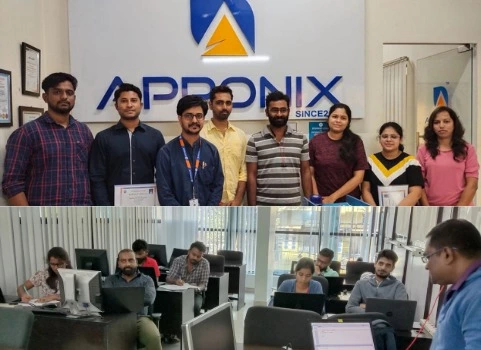
Master Program In Python Full Stack Development
Average salary for a Python Full Stack developer is $134,000
A person who is a Python Full Stack developer can have a bright career as they can find work in multiple sectors within the IT sector. Available job roles are –
- Senior software developer
- Front-end developer
- Back-end developer
- Software UI designing expert
- Senior DevOps expert
Python is quite popular as a Programming Language in the Industry so you can get good opportunities; the number of opportunities is vast.
Python can be used to implement any kind of software. It may be an Enterprise Application, a Website, a Desktop application, a Search Engine or a Gadget.
Python is a secure platform, credits to its Virtual Machine. This is one among the primary reasons organizations worldwide are using this Language. So it’s here to stay for long.
